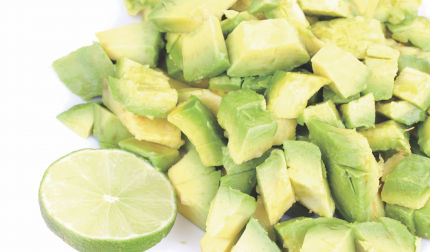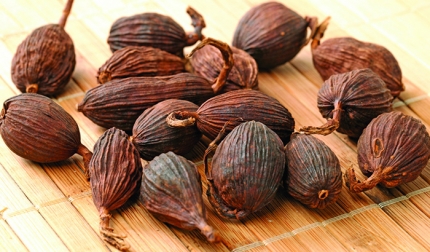The majority of Americans imbibe, but as an athlete there’s more at stake than the average Joe or Jane when it comes to what you put in your body. There’s no need to ‘just say no’ but as a sports nutritionist I do advise my clients to execute the five savvy alcohol strategies outlined below. The payoffs: maximum strength, reduced injury risk, and a lower risk of heart disease, the No. 1 killer of both men and women. Not a bad set of trade-offs.
Post Game: Fill Up on Carbs First
During a game or training session, you burn both body fat and carbohydrate for fuel. Much of that carbohydrate is in the form of glycogen, the type that gets socked away in your liver and muscles as a back-up fuel. That glycogen keeps your brain, nervous system and muscles going during activities that last more than about an hour, when it’s not practical to stop and eat. Alcohol interferes with replenishing your glycogen ‘piggy banks’ after exercise, which can lead to a lack of endurance the next day. In one study researchers compared three post-exercise diets: one high in carbohydrate, a lower carb version with alcohol, and a high carb meal with alcohol added. When carbs were displaced by alcohol glycogen stores plummeted by 50%, even eight hours later. Bottom line: before you sip reach for fresh fruit, and carb-rich side dishes including brown or wild rice, whole grain pasta or potatoes. For a portable ready-to-eat option stock up on snack bags of Mary’s Gone Crackers Sea Salt Sticks & Twigs, made from a combo of seeds and whole grains including organic brown rice, amaranth and quinoa.
Strike the Right Balance
Alcohol isn’t all bad news. In fact, people who don’t drink have a slightly higher risk of heart disease, which decreases with moderate drinking. But as alcohol intake climbs, so does the risk of not only heart attack, but also liver cirrhosis, high blood pressure, stroke, and cancers of the upper gastrointestinal tract. That’s why all of the current nutrition and health guidelines recommend moderation, the best way to reap the benefits without incurring the risks. To oblige cap your intake at one drink a day for women and two for men. And no, they don’t ‘carry over’ (So you can’t have none all week, then 14 drinks over the weekend). One drink equals 5 oz of wine (a little less than a standard single serve yogurt container), 12 oz of regular beer (a bottle or can) or 1.5 oz of 80 proof distilled spirits (a shot glass).
Abstain If You Are Injury Prone
Now for the not so good news: Recent research published in the Journal of Science and Medicine in Sport found that alcohol accelerates post exercise muscle loss. In the study eleven healthy males performed 300 maximal eccentric muscle contractions followed by a drink - either vodka and orange juice or OJ alone. Vodka didn’t trigger more soreness but did significantly impact the loss of muscle strength, by as much as 40%. This isn’t the first study to show these effects and another found that 55% of football players who habitually drink wind up injured compared to 24% who abstain. If you’re in healing mode or recently recovered stick with good old H2O or beverages that promote recuperation, including organic green tea with ginger and honey, fresh juices and fruit smoothies.
Mind Your Mixers
A shot of liquor, glass of wine and bottle of beer all have about the same amount of alcohol, so each of these will raise your blood alcohol concentration equally and provide about the same number of calories. However, liquor is usually accompanied by a mixer, typically in the form of refined sugar, which fuels inflammation. Some inflammation is good and necessary for recovery, but chronic inflammation is a known trigger of premature aging and disease and interferes with healing. If you prefer a cocktail, mix with club soda or seltzer, which are simply bubbly waters, or antioxidant rich 100% fruit juice, such as OJ or pineapple. For your home bar, I highly recommend R.W. Knudsen’s organic selections, including Pomegranate and Black Currant Nectars, and juices made from Acai, Goji and Yumberry (an Asian superfruit).
Go Organic
Both red and white wines pump up protective “good” HDL cholesterol levels and quell inflammation, but red wine is a better source of antioxidants, which are tied to the pigments responsible for its ruby hue. In my opinion, organic red is the gold standard. Conventionally farmed wine grapes are exposed to a wide range of pesticides. Over a dozen have been tagged extremely toxic and at least one is a known carcinogen. Organic wine is free from these chemicals and don’t contain added sulfites, preservatives that can trigger nasty side effects, from a stuffy nose and sneezing to asthma-like symptoms and headaches. My personal favorite is Frey Vinyard’s Organic Sangiovese. Dry but full bodied this California red with flavors of spiced nuts, lemon peel, piney herbs, pomegranate, and pink peppercorn is perfect with classic Italian fare or Mediterranean cuisine.
Cynthia Sass, author of S.A.S.S. Yourself Slim: Conquer Cravings, Drop Pounds and Lose Inches, is a nutritionist, Board Certified as a Specialist in Sports Dietetics. She is the nutrition consultant to the New York Rangers and Tampa Bay Rays and works with professional and competitive athletes in numerous sports. She can be reached via CynthiaSass.com.





